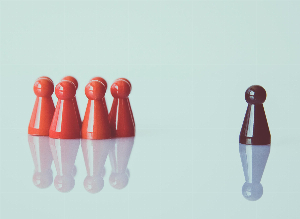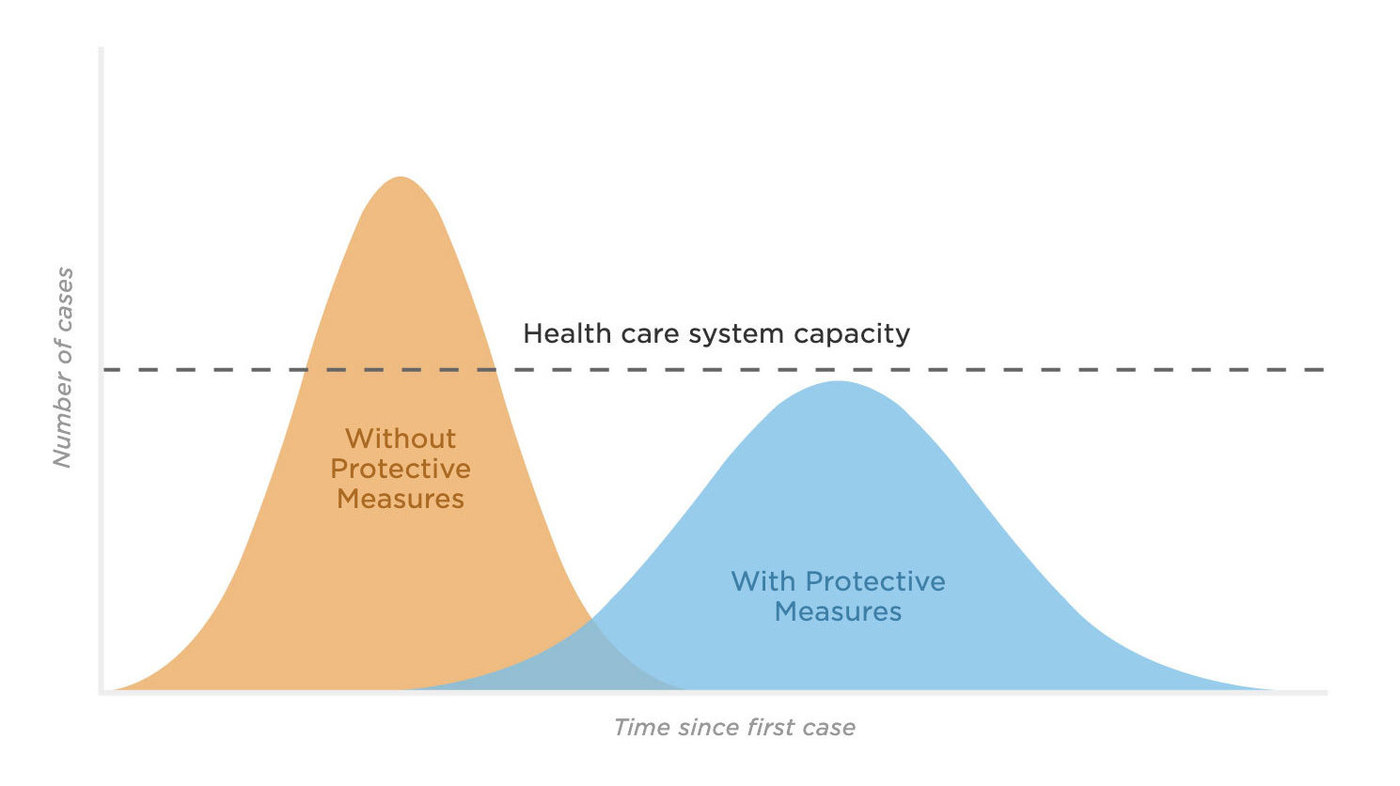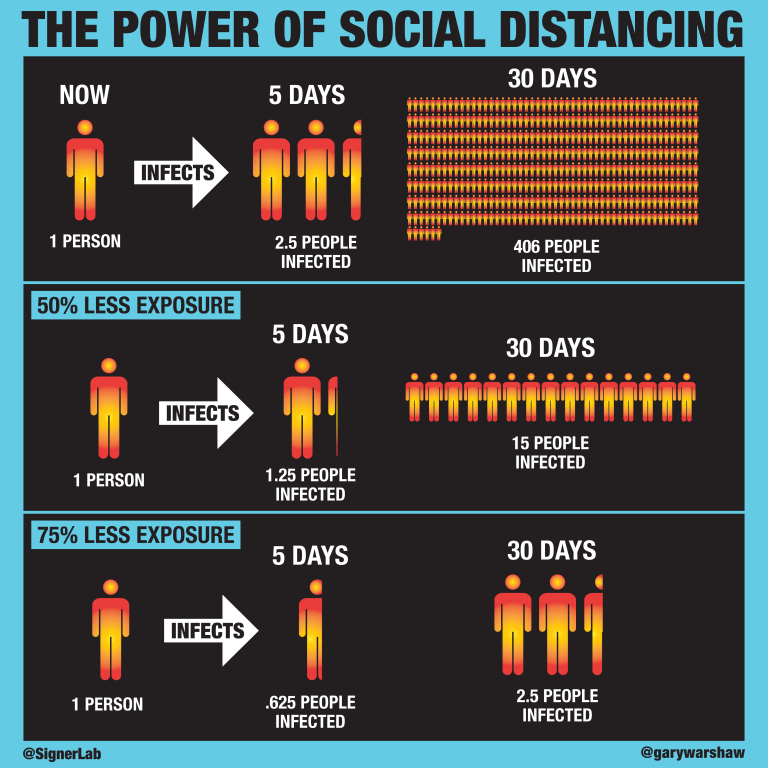Social distancing: how does it work?
Published 24 Mar 2020 • Updated 25 Mar 2020 • By Pauline Heyries
Since the appearance of SARS-Cov2, the virus that causes COVID-19, social distancing measures have been put in place to avoid transmission and stop the spread of the coronavirus. How does an epidemic spread? What is the purpose of containment measures? We tell you everything and encourage you to stay home!

What is an epidemic?
An epidemic is the outbreak and spread of a contagious infectious disease that strikes a large number of people at the same time and in the same place.
Today, the word "epidemic" extends to phenomena that are not necessarily infectious. This is the case, for example, when we speak of the "obesity epidemic".
According to the World Health Organization (WHO), a pandemic is an epidemic that affects a large number of people in a very large geographical area.
Since 11 March, 2020, COVID-19 is considered a pandemic because it affects 155 countries (out of 198 recognized by the UN). Calling the COVID-19 epidemic a pandemic does not mean that the virus has become more deadly, it is simply a recognition of its global spread.
What are the mechanisms for the spread of an epidemic?
The spread of an infectious agent within a population is a dynamic phenomenon: the number of healthy and sick individuals evolves over time depending on the amount of contact between the two groups, allowing the agent to pass from an infected individual to a healthy non-immune individual.
The general transmission mechanism of an epidemic is made up of three elements:
- The pathogenic/infectious agent
- The vector
- The environment.
The vector is the living organism that transmits the pathogen/infective agent from one individual to another in its environment.
It is possible to monitor and compare epidemiological trends between cities, regions, countries or continents over time thanks to the epidemic threshold. The epidemic threshold is defined as the critical number or density of susceptible hosts required for an epidemic to occur. When the epidemic threshold is exceeded, preventive and precautionary measures may be adopted or requested by the health authorities.
If you’d like to learn more about the spread mechanism of the COVID-19 epidemic we invite you to read our article: “Coronavirus: What do you need to know?”
What are the strategies used to contain an epidemic?
In the face of an epidemic, different strategies are used to decrease contamination among the population:
- At the individual level, we can reduce the transmission of the virus by implementing barrier gestures adapted to the ways in which the virus is spread. In the case of COVID-19, the main barrier gestures are: coughing into your elbow, keeping a distance of one metre from others, using single-use tissues, etc.
- At the collective level, social distancing reduces the likelihood of contact between infected and uninfected people, thereby reducing disease transmission, morbidity (the impact of a disease on health) and mortality (the number of deaths). Social distancing is particularly effective when the infection is transmitted through respiratory droplets (as in the case of coronavirus) or direct or indirect physical contact.
Conversly, social distancing is less effective in cases where the infection is transmitted primarily through contaminated food or water or by vectors such as mosquitoes.
In the case of the COVID-19 epidemic, why does social distancing play such an important role?
The coronavirus is transmitted through respiratory droplets, so any close contact (unwashed hands, contact within 1 metre) with a sick person carries a risk of contamination. Furthermore, coronaviruses seem to survive for several hours (8 to 12 hours) in the outside environment on inert surfaces (door handles, tables, lift buttons, etc.).
For the epidemic to regress, it is necessary to reduce exposure by adopting social distancing measures. This method has already proved successful during the "Spanish" flu of 1918, which claimed more victims than the First World War.
Epidemiologists fear that an "explosion" of contaminations will generate more cases than the health system can handle; in this situation, patients could die due to the lack of care because of the lack of available beds. Bearing in mind that COVID-19 is generally benign, especially in children and young adults, it can also be serious: 1 in 5 patients needs to be hospitalised. It is therefore essential to respect social distancing measures if we want to stop the spread of the virus.

In addition, a team of INSERM (the French National Institute of Health and Medical Research) epidemiologists published a study on 14 March that indicated that eight weeks of school closures and 25% home-working would be enough to delay the epidemic's peak by two months and reduce the number of cases by 40% at the height of the epidemic.
Why is it important to comply with containment measures even if you have no symptoms?
COVID-19 can manifest itself in very different ways from one individual to another. The illness can resemble a seasonal cold or flu (cough, fever, runny nose) as well as a severe respiratory infection like pneumonia or SARS (Severe Acute Respiratory Syndrome). But it can also be asymptomatic (presence of the virus in the body without symptoms or clinical signs of infection). These asymptomatic persons are called healthy carriers. Even if they do not have symptoms, healthy carriers remain contagious and can spread the disease to others.
With or without symptoms, a person contaminated with COVID-19 can transmit the pathogen to an average of 2 or 3 people. In addition, the time between infection and the onset of symptoms (incubation period) is 3 to 5 days in most cases, but can be as long as 14 days. This means that an infected person can transmit the disease up to 2 weeks before the onset of symptoms. Under these conditions, it is understandable why it is important to comply with containment measures even if there are no symptoms.

What are the social distancing measures imposed by the government on Tuesday, March 24?
On Monday 23 March, the Prime Minister announced the adoption of strong social distancing measures:
- Requiring people to stay home, except for very limited purposes
- Closing non-essential shops and community spaces
- Stopping all gatherings of more than two people in public
These measures will last for three weeks from 23 March, at which point the Government will reexamine the situation and evaluate if they may be lifted.
Details of the social distancing rules:
Staying at home - you should only leave the house for one of the following reasons:
- Shopping for basic necessities (i.e. food and medicine), as infrequently as possible
- One form of exercise a day (i.e. a run, walk, or cycle), alone or with members of your household
- Any medical need, or to provide care or to help a vulnerable person
- Travelling to an from work, but only where this is absolutely cannot be done from home.
Closing non-essential shops and public spaces - in addition to the businesses which were ordered to close last week, the Government is extending this to include:
- All non-essential retail stores, including clothing and electronics stores; hair, beauty and nail salons; and outdoor and indoor markets, excluding food markets
- Libraries, community centres and youth centres
- Communal places within parks, such as playgrounds, sports courts and outdoor gyms
- Place of worship, except for funerals attended by immediate families
- hotels, hostels, bed and breakfasts, campsites, caravan parks and boarding houses for commercial/leisure use (exclusing permanent residents and key workers)
Stopping public gatherings - the only two exceptions to this rule are:
- Where the gathering is of a group of people who live together
- Where the gathering is essential for work purposes
For more information, you can consult the full guidance published by the Government.
What do I risk if I do not respect social distancing measures?
Every citizen is instructed to comply with these new measures. The Government will therefore be ensuring the police and other relevant authorities have the powers to enforce them, including through fines and dispersing gatherings where people do not comply.
While social distancing measures are effective, containment can have a significant impact on the state of stress and psychological well-being of the population. What do you do to feel less isolated? What advice do you have to help you cope better during this period of confinement? Let's share our tips in comments!
2 comments


 Facebook
Facebook Twitter
Twitter



